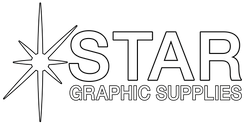Film and Film Chemistry
Film and Film Chemistry are essential components in the traditional prepress process of offset printing, especially in platemaking for lithographic printing. Before the advent of direct-to-plate (DTP) technology, film played a crucial role in transferring artwork to printing plates. Although digital methods have largely replaced film in modern offset printing, many specialized printing shops and applications still rely on film-based processes, making film and its chemistry a critical part of offset printing's legacy and continued use in certain scenarios.
- Photographic Film in Prepress: Film is used as an intermediate step between the original artwork and the printing plate. It is exposed with light to create a photographic negative or positive image that is later transferred to a plate. The use of film ensures precise, high-resolution images, which are essential for detailed and high-quality printing jobs.
- Positive and negative film: Positive film shows the final image exactly as it should appear on the print, while negative film is the reverse, allowing for exposure onto light-sensitive printing plates.
- High-resolution output: Film can achieve high levels of detail and accuracy, especially for fine line work and halftones, which are important for print quality in certain applications.
- Film in Platemaking: The exposed film is placed in contact with a light-sensitive plate, and the image is transferred through exposure to ultraviolet light. This process creates the image areas on the plate that will receive ink during the printing process.
- Halftone and line film: Offset printers often use halftone film to represent shades of gray (or color in the case of CMYK) in images, or line film to capture text and line art. Both are crucial in preparing images for lithographic printing.
- Step-and-repeat film: Used for jobs requiring multiple identical images on a single plate, step-and-repeat film enables cost-effective printing runs, such as packaging or labels.
- Film Chemistry: To develop and process film, specialized chemicals are used. Film chemistry refers to the series of solutions and chemical processes required to develop, fix, and stabilize the exposed film, making it ready for plate transfer.
- Developer solutions: These solutions are used to reveal the latent image on the film after exposure. The developer works by chemically reducing silver halides in the film’s emulsion, making the image visible.
- Fixer solutions: Fixers stabilize the film image by removing unexposed silver halides, ensuring the film doesn’t continue to react to light after processing.
- Rinsing and drying: Once the film is developed and fixed, it is rinsed to remove any residual chemicals, then dried. This step is crucial to ensure no chemical residue remains that could affect the film’s interaction with plates.
- Film Registration and Alignment: In multi-color printing, especially for CMYK, it’s crucial that each color separation aligns perfectly with the others. Film allows for precise registration, with manual or mechanical alignment ensuring that each color prints exactly where it’s supposed to, reducing errors and improving quality.
- Color separations: For CMYK printing, individual films are made for each color channel (cyan, magenta, yellow, and black). These films are overlaid during printing to produce the full-color image.
- Pin registration systems: Pinholes in the film or plates allow for precise alignment, reducing the risk of misregistration, which can lead to blurry or inaccurate prints.
- Special Printing Applications: Film is still widely used in specialty applications where extreme precision, quality, or durability is required. This includes processes like security printing, packaging, or high-end fine art prints where digital platemaking may not yet offer the required level of control.
- Security printing: Film offers higher levels of detail and customization for creating secure features in documents like banknotes, passports, or certificates. Film-based processes ensure that fine details are protected from digital counterfeiting.
- High-end packaging: For certain luxury packaging applications, film still provides superior quality in capturing fine design elements, metallics, and complex patterns.
- Durability and Archival Uses: Film can be stored and reused multiple times for repeat printing jobs. This makes it valuable for archival purposes, especially for long-term projects where the original artwork or files may no longer be available.
- Archiving advantages: Film provides a stable, long-term storage medium for printing jobs, allowing for precise reprints years after the original production. It can also be stored in optimal conditions without degradation, unlike some digital files.
- Transition to Digital and Hybrid Systems: While film and film chemistry remain essential in some offset printing shops, many have transitioned to direct-to-plate (DTP) systems. However, hybrid approaches still exist, where film may be used for certain steps, combined with digital workflows to achieve specific results.
- Digital film output: Digital-to-film processes have emerged, allowing artwork to be produced digitally and then output to film for traditional platemaking.
-

Varn Film Cleaner (4 gal/case) | (5 gal)
Varn
$124.00Varn Film Cleaner 4 gal/case and 5 gal pail Cleans films and prevents static. Specialist cleaner for all printing applications and press types - Varn® Film Cleaner is a professional, solvent-based product and is completely safe for...- Weight:
- 28 LBS
$124.00
